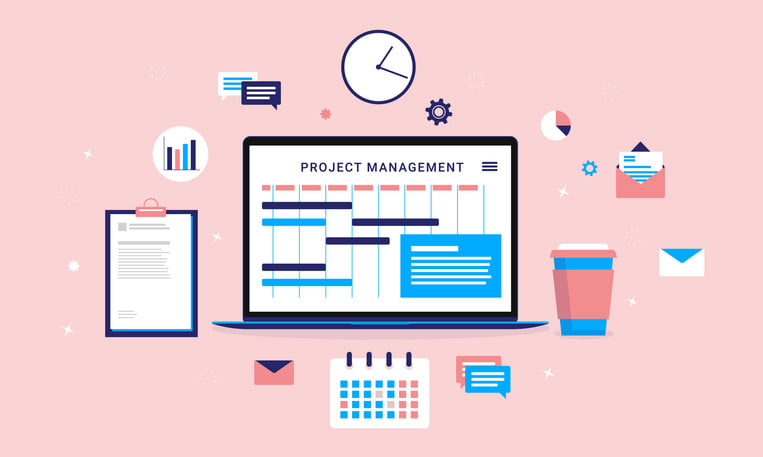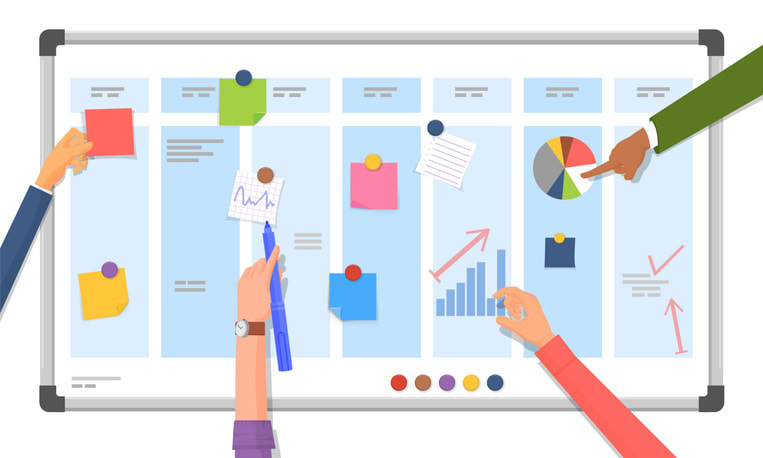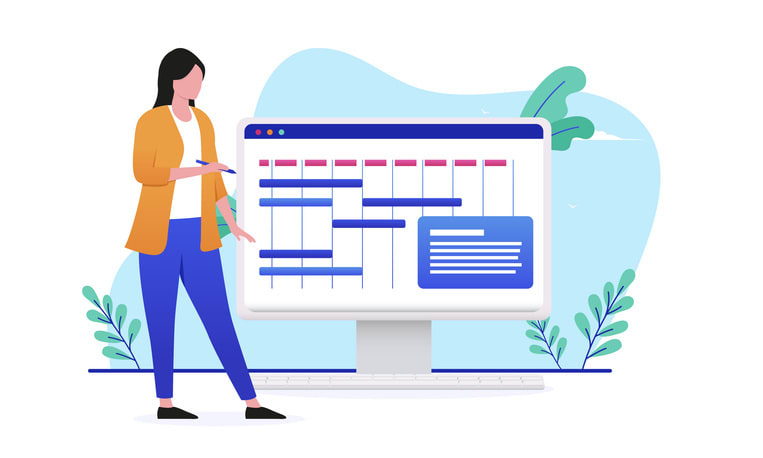Are you struggling with chaotic project management and undefined roles? RACI is the solution that brings order to this chaos. In essence, the RACI model is a powerful project management tool that assigns who is Responsible, Accountable, Consulted, and Informed for each task. Understanding RACI is essential if you need to streamline communication, ensure accountability, and avoid overlapping team duties. Our guide takes you through the intricacies of the RACI model and shows you how to apply it effectively in your projects.
Key Takeaways
- The RACI model provides a clear framework for assigning roles and responsibilities within project management, ensuring clarity and structure by defining who is responsible, accountable, consulted, and informed for each task.
- Effective implementation of the RACI model involves creating a comprehensive chart, educating the team on role definitions, assigning single accountability for tasks, and reviewing roles regularly to keep the project on track and team members informed.
- While RACI charts are widely applicable across various industries, challenges such as complexity in approval processes and role ambiguity can occur. Variations like RASCI or DACI may suit different project needs and integrate with other methodologies.
- Using Kumospace alongside RACI methods ensures your teams remain connected and collaborating, whatever the operational pressure or situation.
Understanding the RACI model

The RACI model, an acronym for responsible, accountable, consulted, and informed, empowers allocating roles and responsibilities in project management. It’s like a roadmap, guiding each team member to understand their role within the project landscape. The ‘Responsible’ individuals get the work done. The ‘Accountable’ person, often the project manager, is the conductor, overseeing the tasks and making the final decision before a task is considered complete. The ‘Consulted’ parties lend their expertise to the project, while those ‘Informed’ are updated on its progress.
The RACI model’s elegance stems from its straightforwardness. By outlining who does what, who has the final say, whose input matters, and who needs to be in the loop, the RACI model brings structure and clarity to project management. It’s like a well-oiled machine, with each part knowing exactly what it needs to do for the whole to function smoothly.
Constructing a RACI chart equates to designing your project’s blueprint. It’s a visual representation of the RACI model, mapping out the roles and responsibilities for each task. This clear delineation of roles ensures that everyone is on the same page, eliminating confusion and promoting a more efficient project coordination process.
Businesses can use RACI alongside collaboration platforms like Kumospace to give workers an accessible and easy way to keep in touch, rather than endlessly trying to find time in calendars for meetings.
The importance of RACI in project management
Clarity, where the RACI model excels, forms the bedrock of efficient project management. The model reduces role confusion and accelerates decision-making processes by precisely defining who is Responsible, Accountable, Consulted, and Informed for each task.
Moreover, the RACI model serves as a communication compass, guiding who needs to be involved in discussions and who needs to be updated on the progress. No more endless email threads or unnecessary meetings. With the RACI model, communication is streamlined, ensuring the right information reaches the right people at the right time.
The RACI model encourages task ownership by clearly demarcating roles and responsibilities. Each team member knows their part and takes responsibility for it, leading to improved accountability and commitment. This sense of ownership can significantly boost project success, making the RACI model an invaluable tool in project management, whatever PM tools you use.
Implementing the RACI model: a step-by-step guide

Though constructing a RACI chart may appear intimidating, with a clear strategy and procedure, it becomes as linear as following a recipe. The first step is to list all project tasks and stakeholders, and researching any gaps.
Once you’ve listed all tasks and stakeholders, it’s time to assign the R, A, C, or I roles for each task and stakeholder using a responsibility assignment matrix. This is where the blur of tasks and roles transforms into a clear and actionable plan. To visualize all responsibilities, create a chart with a column for each role and a row for each task. Not every task requires every letter; sometimes, specifying only who’s responsible and accountable suffices.
Lastly, a thorough review of all roles and tasks is imperative, guaranteeing everyone understands their responsibilities. This is the final quality check before the project takes off. Set up regular review times and share access to the RACI chart and other files to maintain awareness and highlight any changes. Like a pre-flight checklist, this review ensures that your project plan is ready for takeoff.
If you don’t like the look of RACI, other decision-making models are available. Beyond individual projects, OKRs are a good way to measure team and individual performance.
Tips for creating an effective RACI chart
Creating an effective RACI chart goes beyond cataloging tasks and allocating roles. It’s about adopting strategies, especially with remote and hybrid teams, that boost clarity, prevent confusion, and promote efficiency. The first tip is to educate the team about the definitions of Responsible, Accountable, Consulted, and Informed roles. This provides a clear instruction manual, ensuring they understand their role and how it contributes to the project’s success.
Additionally, confirming that a single individual is accountable for each particular task is essential. This prevents the “too many cooks” scenario, where decision-making becomes a muddled, time-consuming process. It’s also important not to get too detailed when listing tasks on the RACI chart. Keep it simple and focused, ensuring the chart serves as a clear and easy-to-follow roadmap.
That roadmap can apply from the launch of a startup business, to each project within a company, and sub-tasks of more complex projects. As the process goes through the stages, use color coding to highlight if any team member is excessively loaded with tasks or falling behind. This ensures equal workload distribution and helps verify that at least one person is responsible and accountable for each task. Like a traffic light system, color coding provides a quick and intuitive way to assess workload balance.
Working deeper with the team, it can also ensure no one is deprived of a good work/life balance, helping workers recover from the stressful periods of any project without overworking them.
Real-life examples of RACI charts in action

RACI charts transcend theoretical constructs and find practical application in numerous industries. In the healthcare industry, for instance, RACI charts help delineate responsibilities among stakeholders, ensuring efficient delivery of project outcomes. It’s like a well-choreographed dance, where each participant knows their moves, contributing to a flawless performance.
In the construction sector, where projects often involve a complex interplay of roles and responsibilities, RACI charts serve as the project manager’s best friend. They provide a clear picture of who does what, helping to manage the intricate web of tasks and roles for successful project completion. Similarly, marketing teams leverage RACI charts to define and assign roles for tasks such as campaign marketing and product launches. This ensures alignment among team members and fosters accountability.
RACI charts prove their worth even in remote team project management and software development. By establishing a clear framework for communication and responsibility allocation among distributed team members, RACI charts can greatly improve project clarity and coordination, regardless of team members’ geographical locations.
Common challenges and pitfalls in using RACI charts

Similar to any tool, RACI charts are susceptible to hurdles and pitfalls. One common challenge is that using RACI charts can lead to convoluted approval procedures, complicating the planning process.
Another pitfall in managing a complex project is role ambiguity, which can result in project delays and errors. This is why ensuring clear role definitions and even workload distribution is crucial.
Nevertheless, these challenges can be eliminated or diminished. The common challenges of RACI charts can be mitigated by maintaining clear role definitions, ensuring even workload distribution, and diversifying accountability. Using strong collaboration tools like Kumospace where people can chat in ad hoc ways improves collaboration, rather than leaving everyone to wait for organized meetings.
RACI model variations and alternatives

The RACI model doesn’t serve as a universal solution and encompasses variations and alternatives addressing diverse project requirements. One such variation is the RASCI model, which adds a Supportive role to the RACI framework. This is like adding an extra gear to your vehicle, providing additional support for higher performance.
Another alternative is the DACI chart, which emphasizes lead drivers, approvers, and contributors for directing action forward.
The CARS model, on the other hand, combines Consulted and Informed roles into one and introduces a support function, optimizing for collaborative support relationships.
Whether you choose RACI, RASCI, DACI, or CARS, the key is to select the model that best fits your project’s needs. It’s like choosing the right tool for the job, enhancing efficiency and productivity.
Integrating RACI with other project management methodologies

The RACI model’s allure lies in its adaptability. It can be integrated with other project management methodologies, such as Agile methodologies like Scrum and Kanban, to enhance cross-functional collaboration and prevent role confusion. It’s like adding a layer of clarity to the Agile framework, strengthening its effectiveness.
In more complex or large-scale Agile projects, the RACI model can add an extra layer of clarity by explicitly defining who is responsible for specific tasks. This not only improves team awareness but also enhances communication, leading to better project outcomes. It’s like adding high-definition to a picture, making the details clearer and more vivid.
While the RACI model can be advantageous, it’s vital to note that its rigid application might not always aid Agile organizations. It could potentially introduce rigidity that runs contrary to Agile principles. It’s like trying to fit a square peg in a round hole; sometimes, a little flexibility goes a long way.
Choosing the right tools for RACI implementation

Selecting the correct tools can simplify the implementation of the RACI model. Monday.com, for instance, offers over 200 customizable templates, including RACI matrix templates, to organize projects and assign roles. It’s like having a personal assistant, making your project management process smoother and more efficient.
Excel, with its customization capabilities and distinct colors for roles, can be used to create a clear and easy-to-understand RACI matrix. Meanwhile, Miro provides an interactive virtual whiteboard that supports the visualization and collective editing of a RACI diagram, fostering collaboration among team members.
Asana and Wrike offer features that facilitate real-time tracking and adjustments throughout the project’s lifecycle. These tools integrate communication tools essential for RACI implementation, ensuring that everyone stays in the loop and on the same page. It’s like having a project management toolkit at your fingertips, ready to tackle any project challenge.
Summary
In conclusion, the RACI model is a powerful tool that brings clarity and efficiency to project management. Whether it’s creating a RACI chart, understanding its benefits, overcoming its challenges, exploring its variations, integrating it with other methodologies, or choosing the right tools for its implementation, mastering RACI can significantly enhance your project management success. So why not give it a try? After all, in the realm of project management, clarity is power, and the RACI model is your ticket to a clear and successful project journey.
Frequently Asked Questions
The acronym RACI stands for Responsible, Accountable, Consulted, and Informed, representing different roles in project tasks.
Using the RACI model in project management minimizes role confusion, expedites decision-making, streamlines communication, and promotes task ownership, enhancing project coordination and stakeholder communication. It is a valuable tool for improving project efficiency and effectiveness.
Yes, the RACI model can be integrated with Agile methodologies such as Scrum and Kanban, but it is important to avoid potential rigidity conflicts with Agile principles.
Some alternatives and variations to the RACI model are RASCI, DACI, and CARS, which provide different role structures and focuses. Consider exploring these options to find the one that best fits your needs.
To create and manage RACI charts effectively, you can use Monday.com, Excel, Miro, Asana, and Wrike for RACI implementation. Choose the tool that best suits your team's needs. For wider collaboration, Kumospace provides an exciting way for teams to meet in a customizable environment and work in the most appropriate method to resolve an issue.





